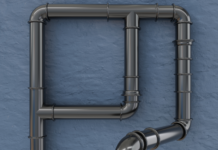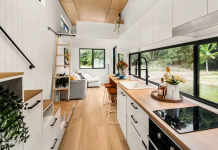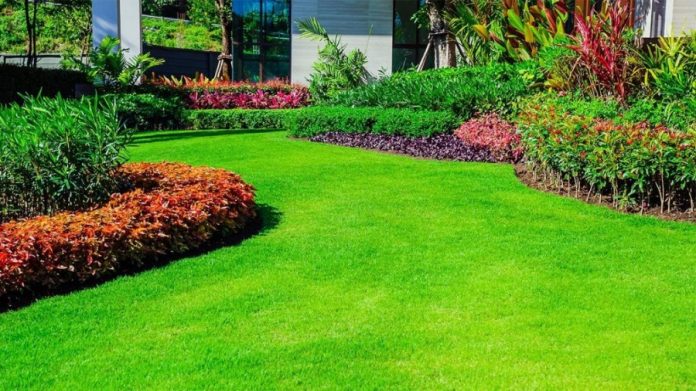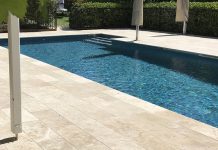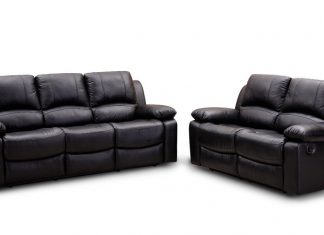According to USA Today Magazine, one of the easiest ways to save on lawn care is by decreasing its size. There’s no denying that maintaining turf is not always that easy; all kinds of issues pop up especially when seasons change, such as the proliferation of weeds and pest infestation. In addition to that, at times, turf just refuses to grow the way you want it to.
So, if it’s become a burden to keep up with lawn care, St. Peters, MO lawn specialists agree that decreasing the lawn size should be considered. This effort does not always mean covering up a portion of the lawn with concrete, although this is a good idea. There are other ways to make your green yard smaller and easier to take care of.
Here are some ideas to consider:
1. Create a Japanese dry garden.
A Japanese dry garden is often mostly sand, stones, bonsai, and at times, a few figurines. This is a fantastic solution for those spots on your lawn that are always barren or patchy.
Such a garden is so much easier to maintain because its elements don’t need fertilizers or a lot of water, and most pests do not like sand. Additionally, a Japanese dry garden is quite customizable. You can easily change its appearance based on your preference because most of its components are movable.
2. Install walkways.
Create a maze of walkways on your lawn, either by pouring concrete or merely setting down big stone tiles or wood planks. These non-grass components will cover a significant amount of lawn space.
However, the installation of these walkways can make mowing slightly trickier, so invest in handheld mowers or clippers to cut the grass around such lawn implements.
3. Set up more plant boxes.
Plant boxes will take up the space where you no longer want grass. They can hold other types of vegetation that may be so much easier to take care of than grass.
For the strategic placement of these plant boxes, make sure to hire professionals in landscaping in St. Charles, MO. Not only will they identify the aesthetically pleasing spots of your yard to position the plant boxes, but they can also install them in a way that will make your lawn thrive even better.
4. Replace grass with structural elements.
Identify the problem spots of your lawn and see what structural items you can place there. For some, a big water fountain is the solution. Meanwhile, others add a covered seating area such as a gazebo. For sporty families, a swimming pool or a basketball or tennis court make the best replacements.
This may seem like quite an expensive replacement for problematic grass, but rest assured, in a short period, you’ll be able to recoup your investment. It’s worthy to note too that the increased opportunities for recreation and enjoyment that such tweaks bring about make them truly worth it.
5. Create a home extension.
If grass just wouldn’t thrive in certain spots of your yard, don’t force it. Instead, think of this woe as a reason to expand the size of your house and have extra functional space. Consider adding a deck for barbecuing and outdoor entertaining. If not a deck, how about a patio if your lawn space is not that big?
A wrap-around porch is also a fantastic idea, as well as those indoor-outdoor rooms that interior designers love for modern homes. All in all, if you have exterior space that’s not serving you well, change your perspective and come up with a clever, different purpose for it.
Other Considerations
Now, if you do not necessarily want to decrease the size of your lawn, but you want to solve the issue of a challenging turf, consider turf replacements. Rounded up below are four of them.
1. Moss
Moss is a no-fuss replacement for grass, but it can replicate the fluffy green carpet appearance of grass. The advantage with using moss is that you can just forget about it. It doesn’t need fertilizers or daily watering like grass does because it gets its sustenance from the air. In addition to that, it doesn’t take root. It just settles on top of the ground and webs together for a tight hold.
2. White Dwarf Clover
White dwarf clover is another excellent alternative to grass. It doesn’t require much care and doesn’t even need to be mowed. Plus, it grows easily even if it doesn’t get a lot of sun. However, you do have to keep the ground moist so it will grow abundantly. You also have to weed now and then.
White dwarf clover is a perennial, and it grows small white blooms, particularly in the spring and summer.
3. Succulents
If you are looking for a super easy-to-maintain ground cover for your lawn, one of the best options is sedum. This is from the family of perennial succulents that grow low, spread, and sprawl vertically (so if you have statues in your yard, it’s just a matter of time before they get covered with sedum).
Sedums grow well in different lighting conditions, but they thrive really well in areas that receive abundant sunshine. Plus, they do not succumb to the intense heat of the summer.
4. Fescue
This is another no-mow alternative. It is a type of grass that doesn’t require much care. Even if the blades grow long over time, they tend to spread out like combed hair.
Another advantage of fescue is that it controls weeds on its own. Since it grows thick rather easily, it effectively suffocates weeds. Also, it doesn’t need to be watered much to ensure its growth.
Smaller Lawn and Smart Options = Beautiful Outdoor Space
Sometimes, when you decrease the size of something, its aesthetic value diminishes. But with the ideas for reducing lawn size and choosing suitable turf replacements shared above, the change may actually prove to be an upgrade in terms of beauty and function.
So, if your lawn has been an abject failure because of problematic grass, put an end to that. Implement the ideas or solutions shared here. They can save you money, as well as time and energy for lawn care.


